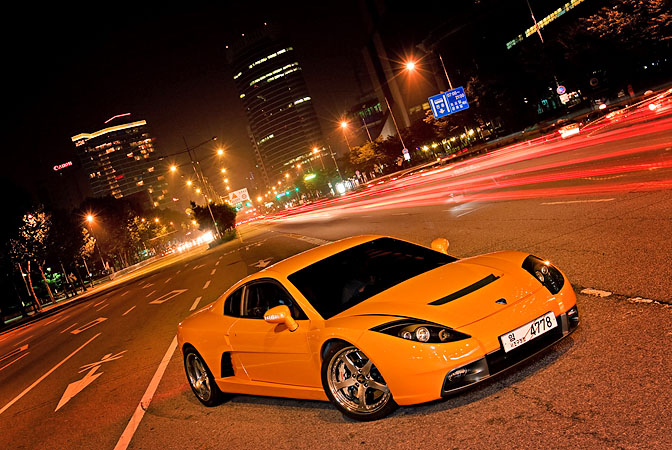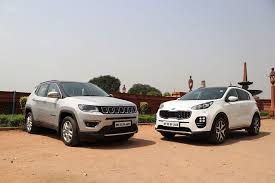
Yes, South Korea has developed supercars, though it is not as widely known for high-performance vehicles as countries like Italy, Germany, or Japan. The development of supercars in Korea has been more recent and has typically involved niche manufacturers rather than the large automakers like Hyundai or Kia. The most notable South Korean supercar to date is the Oullim Motors’ “Spirra”.
Oullim Motors Spirra: South Korea’s First Supercar
The Spirra is widely considered South Korea’s first supercar. Originally developed by Proto Motors, a small South Korean car manufacturer, the Spirra went through several stages of development before it became a true high-performance car. Proto Motors, founded in 1997, was known for building concept cars and prototypes, often in collaboration with larger manufacturers. However, they wanted to create their own high-performance vehicle, leading to the development of the Spirra.
Early Development
The initial prototype of what would become the Spirra was introduced in 2000, under the name PS-II, by Proto Motors. It was a mid-engine, rear-wheel-drive sports car with a lightweight body made from composite materials. While the PS-II was impressive for its time, it lacked the performance to be classified as a true supercar.
The project gained more momentum when Oullim Motors, a South Korean IT and tech company, acquired Proto Motors in 2007. Under Oullim’s ownership, the car was rebranded as the Spirra, and development shifted toward making it a supercar capable of competing with international rivals.
Spirra’s Specifications
The Spirra came in various configurations, with engines sourced from Hyundai, but heavily modified to fit a supercar profile. The highest-performance model, the Spirra Turbo, featured a 2.7-liter V6 engine that could produce up to 600 horsepower in its most powerful variant. With a top speed of over 193 mph (310 km/h) and the ability to accelerate from 0 to 60 mph in under 4 seconds, the Spirra could compete with some of the most established names in the supercar world.
Its lightweight design, due to the extensive use of carbon fiber and fiberglass, also helped improve its handling and performance on the track. While the Spirra was not as luxurious or refined as some of the European supercars, it had a unique appeal for enthusiasts looking for a raw, visceral driving experience.
Challenges and Limited Production
Despite its impressive specs, the Spirra faced significant challenges in the marketplace. South Korea’s automotive industry had long been geared toward mass-market vehicles rather than high-performance supercars, and there was limited infrastructure or customer base for such cars domestically.
Moreover, building a supercar is expensive, and Oullim Motors struggled to scale production. Although the Spirra was available for sale in markets outside of South Korea, including some parts of Europe and the Middle East, production numbers were extremely low. It is estimated that only a few hundred units of the Spirra were ever built, making it a rare and niche supercar.
End of Production and Legacy
Production of the Spirra ended in the mid-2010s as Oullim Motors shifted focus back to its core technology and IT businesses. While the Spirra did not achieve widespread success, it holds a special place in automotive history as the first and most prominent South Korean supercar. It demonstrated that South Korea, known for its strong engineering capabilities, could build a high-performance vehicle capable of competing internationally.
Other South Korean High-Performance Vehicles
In addition to the Spirra, there have been a few other efforts to create performance-focused vehicles in South Korea, although none have reached the level of the Spirra in terms of outright supercar credentials.
Hyundai’s N Division
While Hyundai is better known for producing affordable and reliable cars, it has been making significant strides in the high-performance market with its N division, which focuses on sportier versions of its regular models. Cars like the Hyundai i30 N and Veloster N are examples of this push into performance, though they are more sports cars or hot hatches than supercars.
In recent years, there have been rumors of Hyundai working on more ambitious performance projects, possibly even an electric supercar, but as of now, no such vehicle has been officially confirmed.
South Korea’s Potential for Future Supercars
South Korea’s automotive industry continues to grow and evolve, with companies like Hyundai and Kia pushing into more premium segments and experimenting with performance and electric vehicles. Given South Korea’s strength in engineering, electronics, and emerging technologies like electric and autonomous driving, it is possible that the country could produce another supercar in the future, potentially with a focus on electric performance.
In fact, Hyundai’s high-end brand Genesis has hinted at building more performance-oriented and premium vehicles, and the company’s investment in electric vehicles (EVs) could lead to a high-performance EV supercar in the coming years. South Korean battery technology is already leading the world, and coupling that expertise with automotive design could pave the way for a new generation of performance vehicles.
Conclusion
While South Korea is not typically associated with supercars, the country has produced at least one true high-performance vehicle in the form of the Oullim Motors Spirra. The Spirra may have been a niche product, but it showed that South Korean engineering could compete in the rarefied world of supercars.
As South Korea continues to innovate in automotive technology, particularly in electric and autonomous vehicles, there is potential for the country to make a mark in the supercar industry once again. With companies like Hyundai and Genesis growing their global presence and technological capabilities, the dream of a Korean supercar may still be very much alive, possibly with a futuristic, electric twist.
